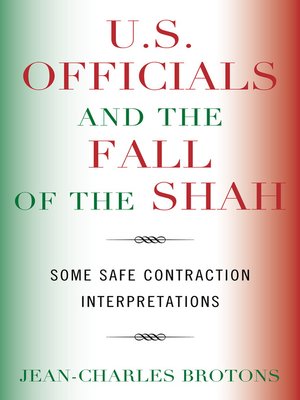U.S. Officials and the Fall of the Shah
ebook ∣ Some Safe Contraction Interpretations
By Jean-Charles Brotons

Sign up to save your library
With an OverDrive account, you can save your favorite libraries for at-a-glance information about availability. Find out more about OverDrive accounts.
Find this title in Libby, the library reading app by OverDrive.



Search for a digital library with this title
Title found at these libraries:
| Library Name | Distance |
|---|---|
| Loading... |
Unlike the dominant trend in cognitive approach to foreign policy, the approach in this book is not guided by reflections in psychology. Like part of Jervis's work, it is inspired by reflections concerning the philosophy of science; yet not by Kuhn's or those of its most well-known critics, but by some more recent and formal reflections known as the AGM theory. The AGM theory, proposed in the 1980's by Alchourr-n, GSrdenfors, and Makinson, is the core of a most dynamic branch of logic, focusing on belief change. It has produced impressive formal results, with echoes in artificial intelligence, database management, and decision and game theory. This book shows how it can be used in political science. The book includes three parts. Part One is a twenty-page review of the AGM theory, avoiding a number of pitfalls, inaccuracies, and misunderstandings that are common elsewhere. Part Two is a review of U.S.-Iranian relations under the reign of the last shah, focusing on the last years of monarchy, and including an unconventional interpretation of U.S. intelligence performance in 1978. The essential part is Part Three, where an AGM model is tested, and intriguing results obtained in connection with U.S. perceptions of the Iranian revolution.







